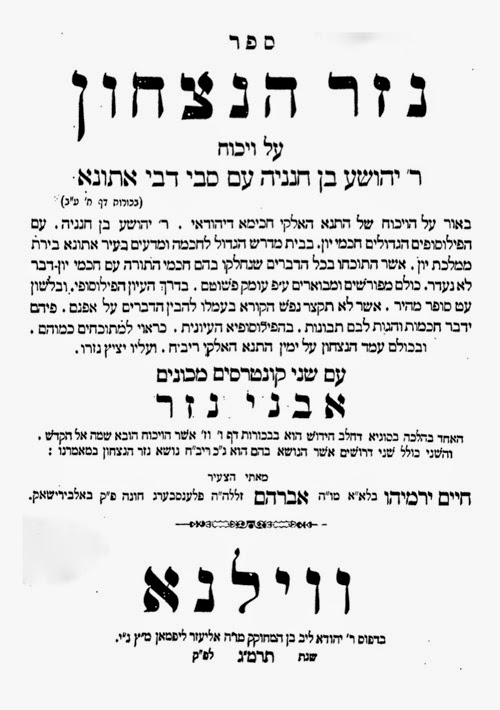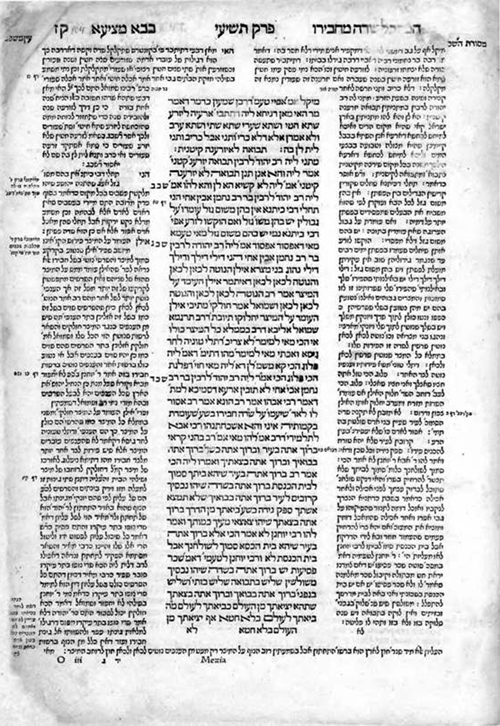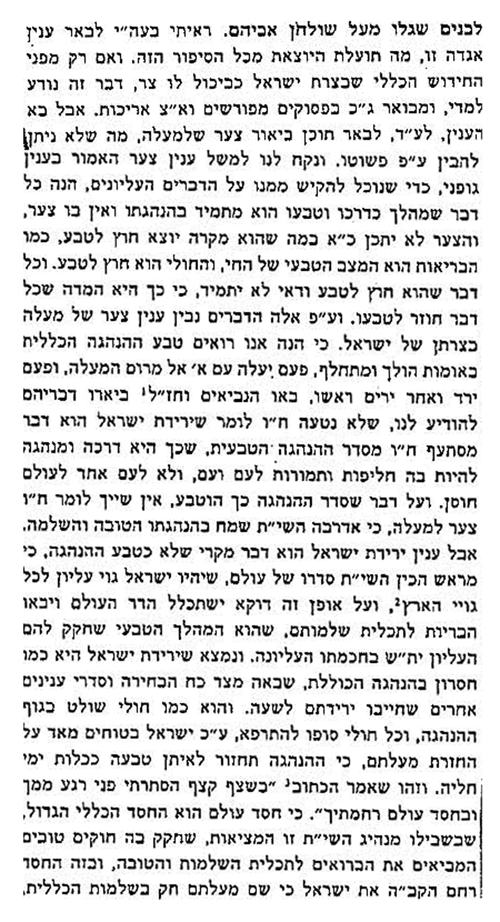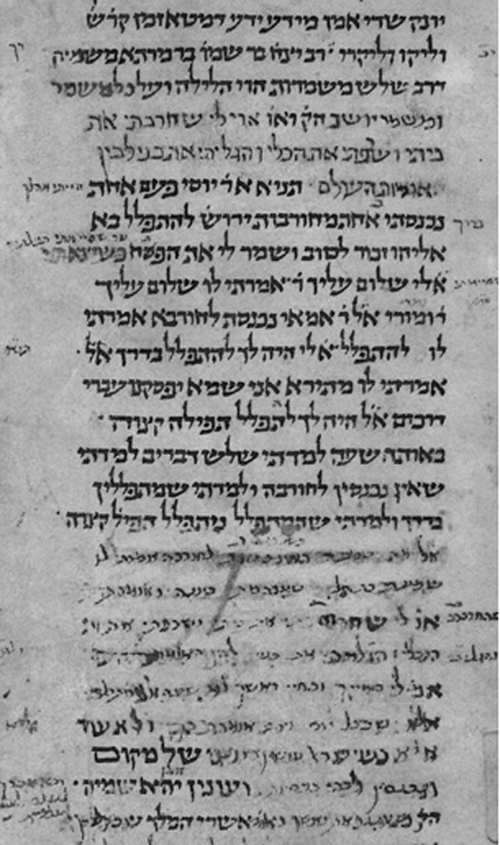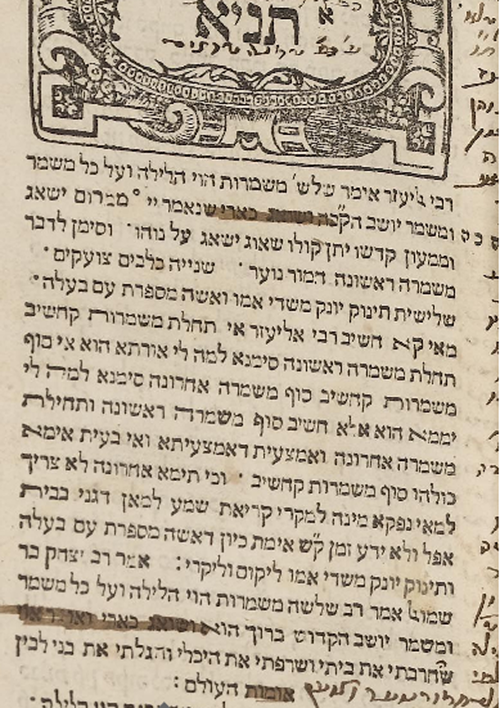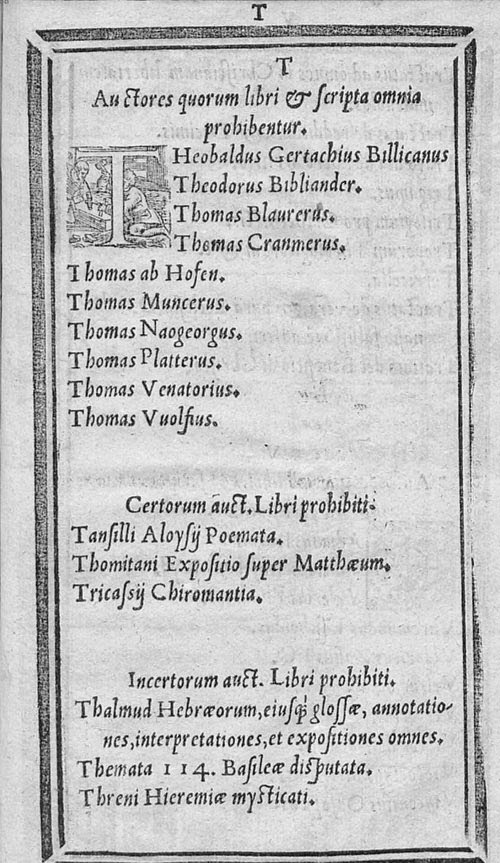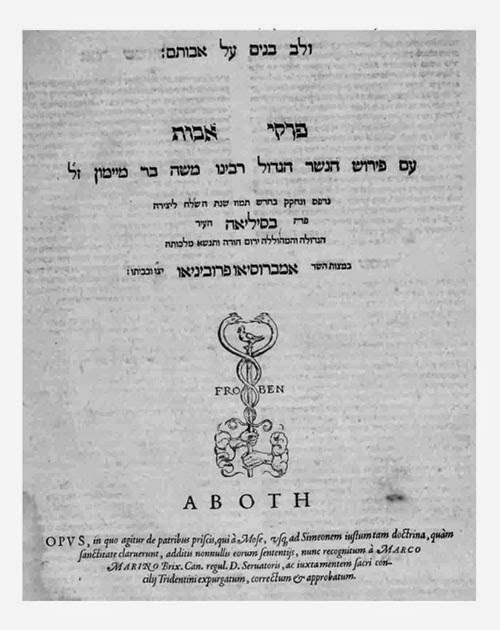Moshe Idel — Kabbalistic Manuscripts in the Vatican Library
Professor Moshe Idel is Max Cooper Professor in Jewish Thought, Department of Jewish Thought at Hebrew University, Jerusalem, and Senior Researcher at the Shalom Hartman Institute.
This post at the Seforim blog by Prof. Moshe Idel, about Kabbalah manuscripts kept in the Biblioteca Apostolica Vaticana (Vatican Library), is an expansion of remarks delivered at the February 2009 symposium hosted at the National Library of Israel, in Jerusalem, to honor the publication of the catalog by Benjamin Richler, ed., Hebrew Manuscripts in the Vatican Library (Città del Vaticano, Biblioteca Apostolica Vaticana, 2008); 791 pages, available here.
This is his first contribution to the Seforim blog.
On Some Unique Kabbalistic Manuscripts in the Vatican Library and Their Contribution to the Scholarship of Kabbalah in Jerusalem
Prof. Moshe Idel
The Hebrew University, Jerusalem
I. The Beginnings of Christian Kabbalah and the Vatican Library
In the summer of 1280, Abraham Abulafia (1240- c. 1291), a Kabbalist who founded the special prophetic or ecstatic version of the Kabbalah, attempted to meet Pope Nicholaus III in Rome. This special effort came as the result of a revelation he had ten years earlier in Barcelona, which presumably consisted in a command to go to Rome at the eve of the Jewish New Year, in a mission reminiscent of Moses’ encounter with Pharaoh: namely to discuss issues related to redemption. From the scant information we have, it seems that though Abulafia was not shy to compare himself to Moses, he was more interested in discussing his belief about the nature of authentic Judaism with the Pope, than in the national rescue of the Jews from the burden of Christendom, or in an attempt to convert the Pope, as some scholars have claimed. He believed Judaism to be a mystical religiosity based on pronouncing divine names in order to reach a mystical experience, understood in spiritual redemptive terms. He took a spiritualized Judaism — constituted by inner experiences which are achieved by a mystical technique – to be a higher form of religion than any of the three monotheistic religions. The Pope was reluctant to see the Kabbalist and retreated for a rest to the beautiful family castle of Soriano nel Cimini, north of Rome. The stubborn Abulafia, who was informed he would be burned if he insisted on following the Pope, nevertheless arrived at the castle, only to learn that the Pope had died of apoplexy that same day. This non-encounter of a Kabbalist actually eager to see the Pope, and a Pope who otherwise took a keen interest in the spiritual Franciscan faction known as the Minorites, is however not the end of this story. After two weeks of arrest in the house of the Minorites in Rome, Abulafia was released and made his way to Messina, Sicily, then part of the kingdom of Aragon. There he remained active for more than a decade, writing a variety of Kabbalistic books and teaching several Jewish intellectuals, and probably also some Christians, his Kabbalah. This openness by a Kabbalist, who deliberately ignored the interdiction against revealing the Kabbalah even to most Jews, is an important development that should be taken seriously when discussing Jewish esotericism and its vicissitudes. The prophetic Kabbalistic trend remained part and parcel of the Jewish mystical literature in Italy, and a significant component of the nascent Christian Kabbalah in late 15th century Florence. The translation of some of Abulafia’s writings from Hebrew to Latin by Flavius Mithridates was one of the most important factors in the impact of ecstatic Kabbalah on the Italian Renaissance. Mithridates, who called himself inter alia also Guillelmus Raimundo Moncada, was a convert to Christianity, who delivered a lecture in the presence of Pope Sixtus IV. Of Sicilian extraction, Mithridates, the son of a Syrian Jew called Nissim Abul- Faraj, presumably studied Abulafia’s Kabbalah in his youth in the island. The special place the ecstatic Kabbalah enjoys in his Latin translations must have something to do with his ability to fathom the rather difficult Hebrew treatises he so skillfully translated. However, his concentration on Latin translations of books of Kabbalah started in a later period of his life — in 1486 in Florence, years after he left Rome — and after his visit to the Holy See. Those translations are the fountainhead of the first most important piece of Christian Kabbalah, Giovanni Pico della Mirandola’s Conclusiones, which include dozens of theses based on Kabbalistic views. Those 900 Conclusiones were condemned immediately by the Pope, and the young count had to flee Italy. He returned to Florence only when the next Pope, related to the Medici family, was elected. However, most of Flavius Mithridates’s Latin manuscripts, which played such an important role in the emergence of Christian Kabbalah, and thus Abulafia’s Kabbalistic treatises (in Latin and in a slightly Christianized form) have found their way to the Vatican Library, arriving more than two centuries after their composition. Today they are catalogued as MSS 189-191, together with the Hebrew manuscripts, and a fourth one, as Vatican, Cod. Chigi A. VI.190. Those are unique manuscripts, autographs of Mithridates. They testify to his sophisticated translations, mistranslations and deliberate glosses and interventions which sometimes change the intention of the Hebrew original, in order to look closer at Christian tenets. They remained there for more than four centuries, before a serious study of their content and an analysis of their impact on Giovanni Pico was undertaken by Prof. Chaim Wirszubski, of the Hebrew University in Jerusalem. His groundbreaking inquiry, Pico della Mirandola’s Encounter with Jewish Mysticism (Harvard University Press 1987), opens the way for a much more profound understanding of the precise sources of some important aspects of Pico’s thought. Wirszubski’s fine scholarship (done in Jerusalem under the auspices of the Israeli Academy for Sciences and Humanities) brought some of Abulafia’s Kabbalistic visions as mediated by Mitridathes to the attention of the scholarly community. In fact he discovered in the Latin translation an Abulafia work, that had been preserved only in a poor and quite fragmentary form in the original Hebrew. Let me point out that in addition to the rich material belonging to Mithridates’s Latin translations from Abraham Abulafia and his circle, the Vatican collection contains several important treatises of this Kabbalist in their original Hebrew (e.g., Sefer ’Or ha-Sekhel, Sefer ha-’Ot, Sefer Hayyei ha-‘Olam ha-Ba’). Even more importantly, the collection houses the lengthiest extant part of one of Abulafia’s earliest books, Sefer Mafteah ha-Re‘ayon, (Heb. 291), a book not found in this form in any other manuscript. This fragment, written originally in 1273, is quite important for understanding the earliest phase of the thought of this ecstatic Kabbalist. In this sense it is similar to the above-mentioned Latin translation that preserved another book of Abulafia’s written in the same year. If we add to the presence of these manuscripts in the Vatican Library the fact that Abulafia’s prophetic books, (some containing quite enigmatic forms of spiritual apocalypses, found in very few manuscripts) are found in the Angelica library – which is outside the scope of Benjamin Richler, ed., Hebrew Manuscripts of the Vatican Library (Città del Vaticano: Biblioteca Apostolica Vaticana, 2008) – it seems that the written voice of Abulafia’s Kabbalah found its way to the Vatican libraries in quite an impressive manner. The recent project of a critical edition of those translations, undertaken by Giulio Busi and Saverio Campanini among others, brings scholarly attention to the basic sources of early Christian Kabbalah.
II. Vatican MS Heb. 202 and the Beginning of Jewish Kabbalah
The Vatican collection contains an important and unique manuscript compiled sometime in the 14th century and copied in a Spanish hand. This manuscript contains a variety of Kabbalistic material stemming from several schools: Provencal, Catalonian, and Castilian forms of Kabbalah. Some of the traditions found there are related to the beginnings of some historical phases of Kabbalah (especially in early decades of the thirteenth century) and served as building stones for the scholarly edifice regarding this period by Prof. Gershom Scholem of the Hebrew University, the famed pioneer of the study of Kabbalah. In this codex Scholem discovered quite early in his career an epistle that was the most important single document supporting his reconstruction of the relations between the Provencal school as represented by Rabbi Isaac Sagi-Nahor, the so-called “father of Kabbalah,” and two important younger Rabbis, active in the Catalan city of Gerona, Rabbi Moses ben Nahman (Nahmanides) and his cousin Rabbi Jonah Gerondi. The exchanges between these rabbis concern the disclosure of Kabbalistic issues by other Kabbalists; and the scant data found in the epistle are indispensable testimonies in any attempt to describe the dissemination of Kabbalah from Provence to Catalonia and from there to Castile. This epistle exists in a unique manuscript, and since its publication by Scholem in the thirties and its more detailed analyses in the forties and sixties — especially in his Origins of the Kabbalah, trans. R.J. Zwi Werblowsky (Princeton University Press, 1989) — no other similar manuscript of this epistle has been identified. As in the case of the beginning of Christian Kabbalah, here too our understanding of the beginning of the Jewish Kabbalah owes much to unique Vatican manuscripts.
III. Rabbi David ben Yehudah he-Hasid’s Hebrew Translations of the Zohar
The most important documents of Kabbalistic literature are indubitably the Zoharic literature. The Zoharic literature, which was written between the late seventies of the 13th century and the early decades of the 14th century in Castile, mostly in Aramaic, was immediately canonized and became the cornerstone for a variety of Kabbalistic schools, especially the mid-16th century Kabbalists who were active in Safed. The processes involved in the emergence of this literature, its authors, its canonization and its various kinds of reception still need extensive research. The Hebrew manuscripts found in the Vatican library may help illuminate some aspects of those processes. Let me offer a major example in this direction. Two anonymous manuscripts in the Vatican collection, Heb. 62 and 168, contain a Hebrew translation of some Aramaic parts of the Zoharic commentaries on the Pentateuch. Though similar in many ways, each the two manuscripts is also unique. An analysis of the style of the translation and a comparison to segments of other Hebrew translations of Zoharic passages found in the Hebrew writings of Rabbi David ben Yehudah he-Hasid, led me to identify the anonymous translator as this Kabbalist. A late 13th or early 14th century Kabbalist, Rabbi David may well be not only one of the first commentators on this book, but quite plausibly its first translator ever. This means that these two codices can aid us to conjecture about the Aramaic versions underlying the translation. We thus have here the earliest extensive testimonies about the nature of the text of the third most important book in Judaism. Moreover, in some cases in those two manuscripts, the version of the Hebrew translation is accompanied by lengthy Aramaic passages, which may constitute the earliest extensive excerpts from the Zoharic literature to have reached us in the original language. Though some short quotes from this Hebrew translation are found in 16th century Kabbalists, it is only in the two above-mentioned manuscripts that dozens of pages are found. However, let me point out that there are also other codices in the Vatican collection which may turn into a mine of important information related to the history of the text of the Zohar. Two examples are the anonymous Hebrew translation of the Zohar in Heb. 226 and the texts found in the first part of MS Heb. 203. Both of these deserve special attention by the scholars of the Zohar.
IV. The Byzantine Kabbalah in the Vatican Library
We mentioned above the main Kabbalistic codices in the Vatican that represent developments that in Sicily, Italy, and the Western Europe. However, several important manuscripts found in this library, may contribute to a future history of a rather neglected center of Kabbalistic literature, the Byzantine one. Compared to the Provencal and the Spanish centers, the Byzantine Empire was a relatively late center; and, from the mid-14th century a different form of Kabbalah emerged there.. Its precise conceptual contours, as well as the treatises that were written there, slowly emerge as the scholarship of Kabbalah is advancing. It has become more and more plausible in the last decades that important Kabbalistic treatises were written in the Empire, rather than in Spain or Italy as scholars previously believed. This is the case of some classics of Kabbalah like Sefer ha-Temunah, Sefer ha-Peliyah and Sefer ha-Qanah but there is a plethora of related smaller treatises that were also written in the Byzantine Empire. The Vatican holds several important manuscripts that may fruitfully serve as the starting point for a study of this Kabbalistic center. MSS Heb. 188, 194, 195, 218, 220, 223, are outstanding examples of the arrival of all the major pieces of Byzantine Kabbalah to Italy and the impact this arrival on the nature of Italian Kabbalah during the late 15th century, and also of the Christian Kabbalah since the beginning of the 16th century. In this context, let me mention two other unique Kabbalistic manuscripts. These relate to a dispute regarding the belief in metempsychosis that took place in the city of Candia, in Crete in the second part of the 15th century. Two lengthy codices, MSS 105 and 254, contain the documents listing the pros and cons of this belief and against it, as reflecting the views of, respectively, Rabbi Michael ha-Kohen Balbo and Rabbi Moshe Ashkenazi. The vast majority of the arguments in this sharp controversy are unknown from any other manuscript. Thus only the Vatican manuscripts may enable a reconstruction of the various debates related to this important type of Kabbalistic belief. This reconstruction was done by a third important Hebrew University scholar, Prof. Efraim Gottlieb. It has been continued more recently in a Ph. D. thesis of Dr. Brian Ogren at The Hebrew University of Jerusalem.
We may conclude that the variety of the various manuscripts found in the Vatican collections reflects the variety of Kabbalistic literature since its inception up to its peak in the mid-16th century. In short, I offered above several examples for the indisputable contributions the Kabbalistic manuscripts found in the Vatican collection did contribute in the past for understanding major phases in the history of Kabbalah. The present Catalogue, an excellent example of what a catalogue of Hebrew manuscripts should be, will certainly facilitate the study of additional manuscripts and will enrich our understanding of the evolution of the various forms of this vast literature. We may hope, in an era less interested in philological studies than earlier, that the tradition of close reading of manuscripts in a serious manner, which was a vital part of scholarship at the Hebrew University, will remain a vital component of the future studies of Kabbalah; and the Vatican codices will continue to yield new findings for a better understanding of a vital aspect of medieval Judaism.
V. Thanks for the Free Access
Let me turn to another dimension of the Vatican collection, which is not related to the content of manuscripts but with the politics of access to the Hebrew manuscripts found in this library. When the Institute of Hebrew Manuscripts — whose researchers were the main contributors to the Catalogue that is celebrated here — was founded at the Jewish National and University Library in Jerusalem, many libraries over the world agreed to have their manuscripts microfilmed and consulted free by scholars. However, most of them required researchers to request permission in writing before allowing their manuscripts to be copies or published. Only three libraries out of dozens — the Vatican in Rome, the Escorial in Spain, and the Cambridge University Library in England — were ready to give scholars free automatic permission to microfilm, photocopy or publish their manuscripts. For persons acquainted with the inevitable vicissitudes involved in correspondence with libraries in general, (including to be sure the Italian ones), this automatic permission constituted a special act of encouragement to engage these manuscripts. This kind renouncement of the legitimate rights of these libraries facilitated a much easier access to some Kabbalistic manuscripts. That in turn was especially helpful for scholars who — like myself in the initial stages of my study of Kabbalistic manuscripts — did not live in Jerusalem,. This explains why in some of my writings I relied upon Vatican manuscripts, even when there are also other manuscripts containing a certain Kabbalistic treatise. Abulafia’s major treatise Sefer ’Or ha-Sekhel, found in the Vatican Library Heb. 233 is one case in point. I take this opportunity to thank the Vatican Library, late as these thanks may be, for the generosity that contributed not only my modest studies of the Kabbalistic material, but also of many other scholars, who also benefited from the liberal approach of the directors of the that Library.
